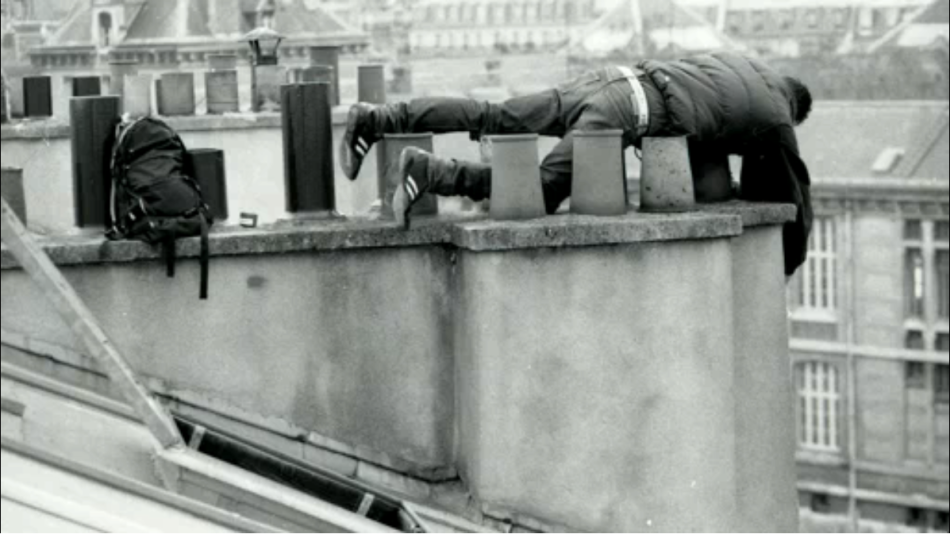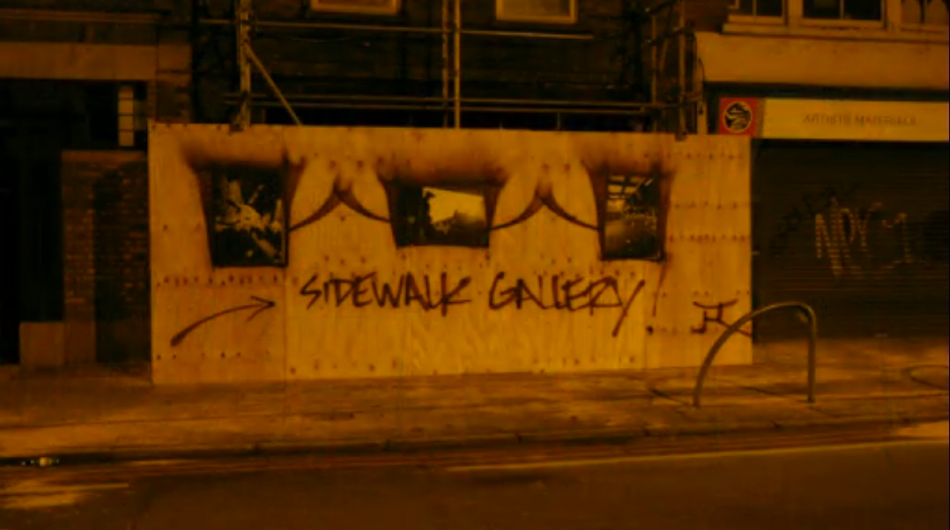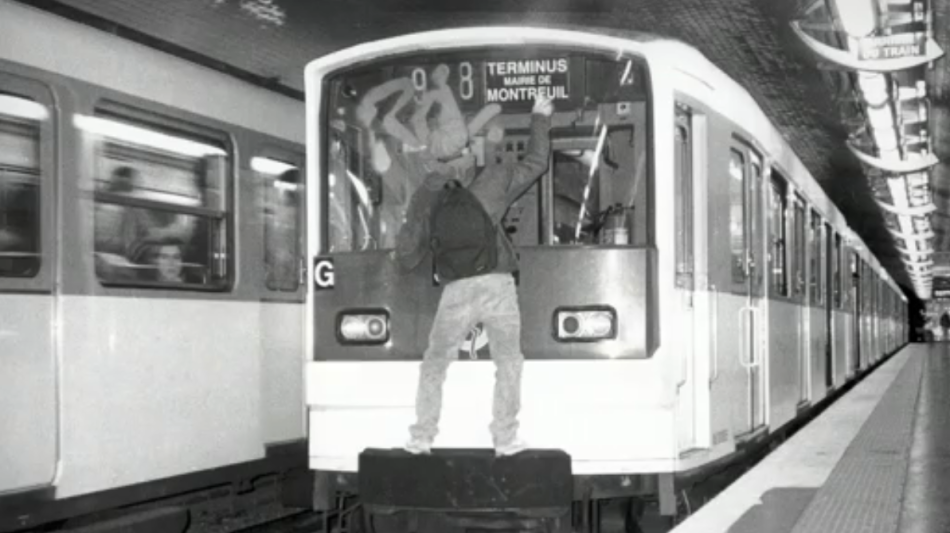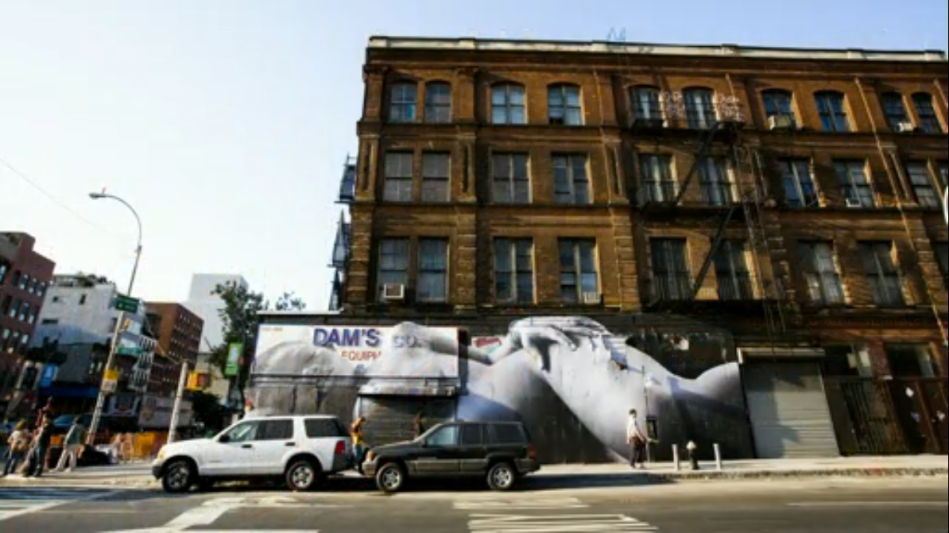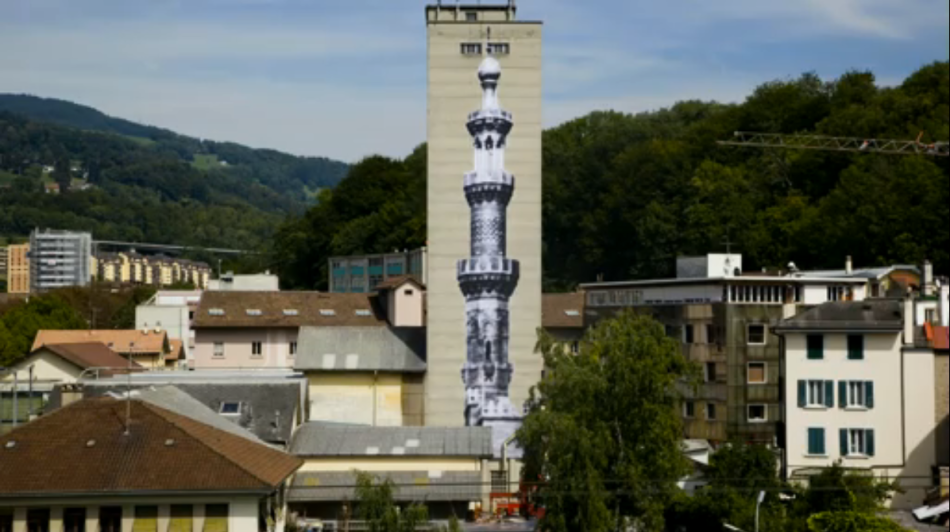Post-beat means after, against, and within the formation of Beat attitudes, for better and worse, and authors can still work to open up a future-oriented space for the renewal and transformation of this visionary tradition of “hipster vision,” if this “post” beatitude is to live on as poetic and social force for creative activism, conversion, power, and cultural-political transformation of the human into cyborg-angelic post-modern.
-Rob Wilson, Beat Attitudes
Hidden behind his signature sunglasses and fedora, JR, like his now-famous British counterpart Banksy, is a man of mystery. There are certain facts that everyone seems to agree on: He was born in France. He is 28 years old. He got his start as a graffiti writer, but has since morphed into a hybrid photographer/street artist. He refers to himself as a “poster artist.”
-Lea Lion, BrandX article
I can’t save the world. Nobody can. The world is fucked up. C’mon, you know: you have dictators ruling the world, population is growing by millions, there’s no more fish in the sea, the North Pole is melting, and as the last presenter said, we’re all becoming fat; except maybe French people. But can art change the world?
-JR, TED Talk
Over the last few years a street artist by the name of JR has captured the world’s attention with his challenging, empowering, and unifying projects. Out of the subterranean streets of Paris, JR has expanded his vision and traversed world boundaries, not in a search of personal enlightenment, but in an attempt to bring awareness and beauty to places that would find museums rather foreign.Outside of where he’s from, how old he is and how he got started, not much is known. Like many street artists, the person behind the art is not what matters, only the art and its effect on the community.
The lineage of post-beat artists and activists has seemingly led to JR, whose work is copious with post-beat action. There are traces of Kerouac’s angelic mobility of the road and rails, Burroughs’ cut-ups, Kerouac’s idea of the “fellaheen” people, the world-making power of the Beat Generation and establishing a revolution through communal insurgent art. JR has not just followed in the footsteps of the Beats, but has perpetuated certain lifebloods while transforming and inverting flawed areas and additionally employing ignored or oppressed ideas. Welcome to JR’s Post-Beat Streets.
